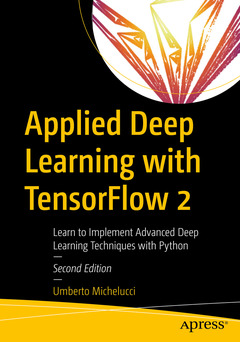Applied Deep Learning with TensorFlow 2 (2nd Ed., 2nd ed.) Learn to Implement Advanced Deep Learning Techniques with Python
Auteur : Michelucci Umberto

Understand how neural networks work and learn how to implement them using TensorFlow 2.0 and Keras. This new edition focuses on the fundamental concepts and at the same time on practical aspects of implementing neural networks and deep learning for your research projects.
This book is designed so that you can focus on the parts you are interested in. You will explore topics as regularization, optimizers, optimization, metric analysis, and hyper-parameter tuning. In addition, you will learn the fundamentals ideas behind autoencoders and generative adversarial networks.
All the code presented in the book will be available in the form of Jupyter notebooks which would allow you to try out all examples and extend them in interesting ways. A companion online book is available with the complete code for all examples discussed in the book and additional material more related to TensorFlow and Keras. All the code will be available in Jupyter notebook format and can be opened directly in Google Colab (no need to install anything locally) or downloaded on your own machine and tested locally.
You will:
? Understand the fundamental concepts of how neural networks work
? Learn the fundamental ideas behind autoencoders and generative adversarial networks? Be able to try all the examples with complete code examples that you can expand for your own projects
? Have available a complete online companion book with examples and tutorials.
This book is for:
Readers with an intermediate understanding of machine learning, linear algebra, calculus, and basic Python programming.
Covers Debugging and optimization of deep learning techniques with TensorFlow 2.0 and Python
Covers recent advances in autoencoders and multitask learning
Explains how to build models and deploy them on edge devices as Raspberry Pi using TensorFlow lite
Date de parution : 03-2022
Ouvrage de 380 p.
17.8x25.4 cm



